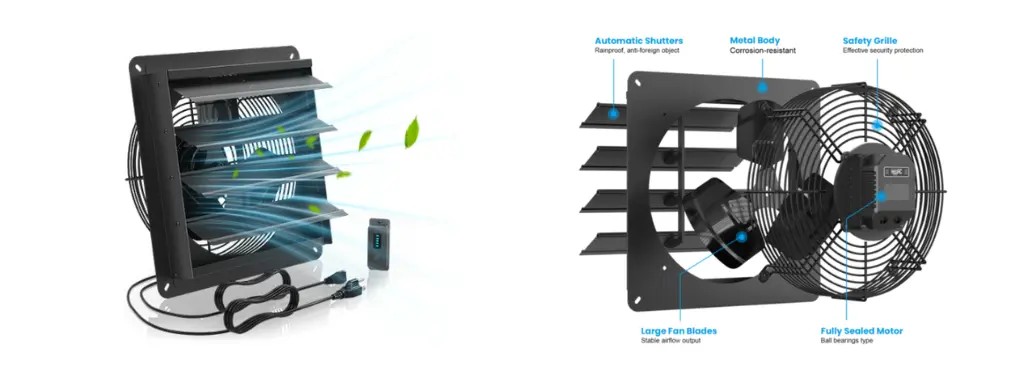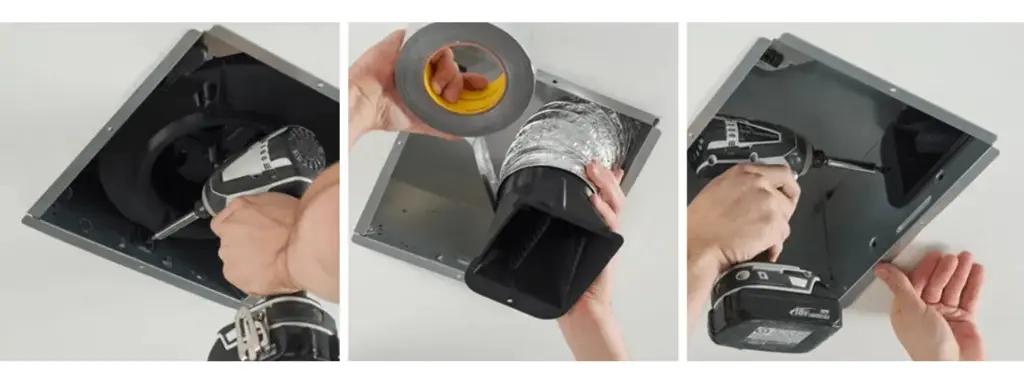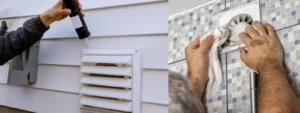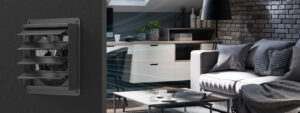Healthy air quality at home is essential but often overlooked. One way to improve air circulation and ventilation is by installing exhaust fans. Issues like food odors, excess moisture, or poor airflow can be easily addressed with an exhaust fan, which is relatively inexpensive to maintain. So, do you need one? In this blog, we’ll explore the benefits of exhaust fans in improving air quality, how they can address common household issues, and why they might be a great addition to your home.
What Is An Exhaust Fan?

An exhaust fan helps ventilate your home by removing stale, moist, or polluted air and replacing it with fresh air. These fans are commonly installed in kitchens, bathrooms, attics, and crawl spaces—areas where air quality and moisture levels can become problematic. Whether it’s clearing the air of unpleasant odors, preventing mold growth, or improving airflow, an exhaust fan plays a crucial role in maintaining a healthier indoor environment.
There are several types of exhaust fans: bathroom exhaust fans, kitchen range hood fans, crawl space vent fans, and more. Understanding which fan suits a specific area of your home is key to effectively addressing the unique ventilation needs of that space.
Why Do You Need an Exhaust Fan?
- Prevents Moisture from Building Up
In high-humidity areas like bathrooms and kitchens, excess moisture can lead to the growth of mold and mildew. These issues are not only unsightly but can also cause structural damage if left unchecked. An exhaust fan helps remove moisture from the air, keeping walls, ceilings, and floors dry and preventing potential damage.
- Improves Air Quality
Exhaust fans help remove indoor pollutants such as cooking odors, smoke, grease, and moisture. In rooms with limited ventilation, these pollutants can linger, affecting the overall air quality. By removing stale air and introducing fresh air, exhaust fans improve the atmosphere in your home, reducing unpleasant odors and preventing mold and mildew from taking hold.
- Regulates Temperature and Prevents Overheating
Improper ventilation often leads to temperature imbalances, making certain areas of the home uncomfortably hot. This is especially true for attics, kitchens, and basements. Exhaust fans help regulate airflow and stabilize the temperature inside the home, making it more comfortable during the warmer months. For instance, an attic exhaust fan helps expel hot air, preventing the attic from becoming too warm and, in turn, ensuring better comfort throughout the house.
- Reduces the Risk of Structural Damage
Excess moisture is one of the leading causes of structural damage in homes. In areas like attics, crawl spaces, and basements, moisture can weaken the materials that support the structure of the house. Installing exhaust fans in these spaces ensures proper ventilation, reducing the risk of long-term damage to your home’s framework.
Types of Exhaust Fans to Consider
The right exhaust fan depends on the space you need to ventilate. Here are some common types of exhaust fans:
- Cabinet Exhaust Fan
Ideal for kitchens, a cabinet exhaust fan removes smoke, steam, and odors from cooking areas. Placing it above the stove or cooking space maximizes its effectiveness in maintaining a clean, odor-free kitchen.
- Crawl Space Vent Fan
Crawl spaces are often damp and poorly ventilated, making them prone to mold and mildew. A crawl space vent fan ensures proper airflow in these areas, preventing moisture buildup and contributing to a healthier indoor environment.
- Attic Exhaust Fan
An attic exhaust fan helps expel hot air and moisture, improving temperature regulation in the attic. By reducing heat accumulation, this fan helps keep your home cooler in the summer, especially in upper-level rooms.
- Bathroom Exhaust Fan
Bathroom exhaust fans are essential for removing moisture after showers or baths. They help clear fog from mirrors and prevent the growth of mold and mildew, contributing to a drier, more hygienic bathroom.
When to Consider Exhaust Fan Installation
If you notice any of the following issues in your home, it may be time to install an exhaust fan:
- Your bathroom becomes foggy after showers, and humidity lingers.
- Damp smells from cooking or moisture linger in the kitchen.
- Mold or mildew is starting to form on walls or ceilings.
- Your basement or crawl space smells damp.
- Some areas of your home feel stale or have stagnant air due to poor ventilation.
If these problems sound familiar, installing exhaust fans could be the solution to restore proper ventilation and improve your indoor air quality.
How to Choose the Right Exhaust Fan for Your Home
Selecting the right exhaust fan involves considering several factors:
- Room Size: Larger rooms like attics and basements require more powerful fans for effective ventilation.
- Noise Level: Look for fans with a low noise rating if you prefer quieter operation.
- Installation Requirements: Make sure the fan is compatible with your installation preferences, whether on walls, ceilings, or cabinets.
- Energy Efficiency: Opt for energy-efficient models to save on utility bills while still achieving optimal airflow.
Is an Exhaust Fan Worth It?
Installing exhaust fans in your home can significantly improve air quality, prevent moisture buildup, and protect your home’s structure in the long term. Whether you’re dealing with kitchen odors, bathroom humidity, or damp crawl spaces, an exhaust fan can solve these common problems and enhance the overall comfort of your home.
At Aitecac, we offer exhaust fans designed to ensure proper ventilation and improve the air quality in every part of your house. For more information about our products, including our Exhaust Ventilation systems, visit our website and take the first step toward creating a healthier, more comfortable living space for you and your family.
FAQ:
Q1: How do I choose the best exhaust fan for my bathroom?
To determine the best exhaust fan for your bathroom, consider the size of the room and the level of humidity. Smaller bathrooms require less powerful fans, while larger bathrooms need more robust ventilation. Always check the CFM-to-room-size ratio before installation.
Q2: Will an exhaust fan prevent mold growth in my attic?
Yes! An attic exhaust fan helps regulate temperature and moisture, preventing conditions that lead to mold and mildew growth.
Q3: Is installing an exhaust fan difficult?
The difficulty of installation depends on the fan type and location. Some fans are easy to install, while others may require professional assistance. Always follow the manufacturer’s installation instructions.
Q4: How often should I clean my exhaust fan?
Exhaust fans should be cleaned at least once every six months. Dust and dirt can accumulate, reducing the fan’s efficiency.





